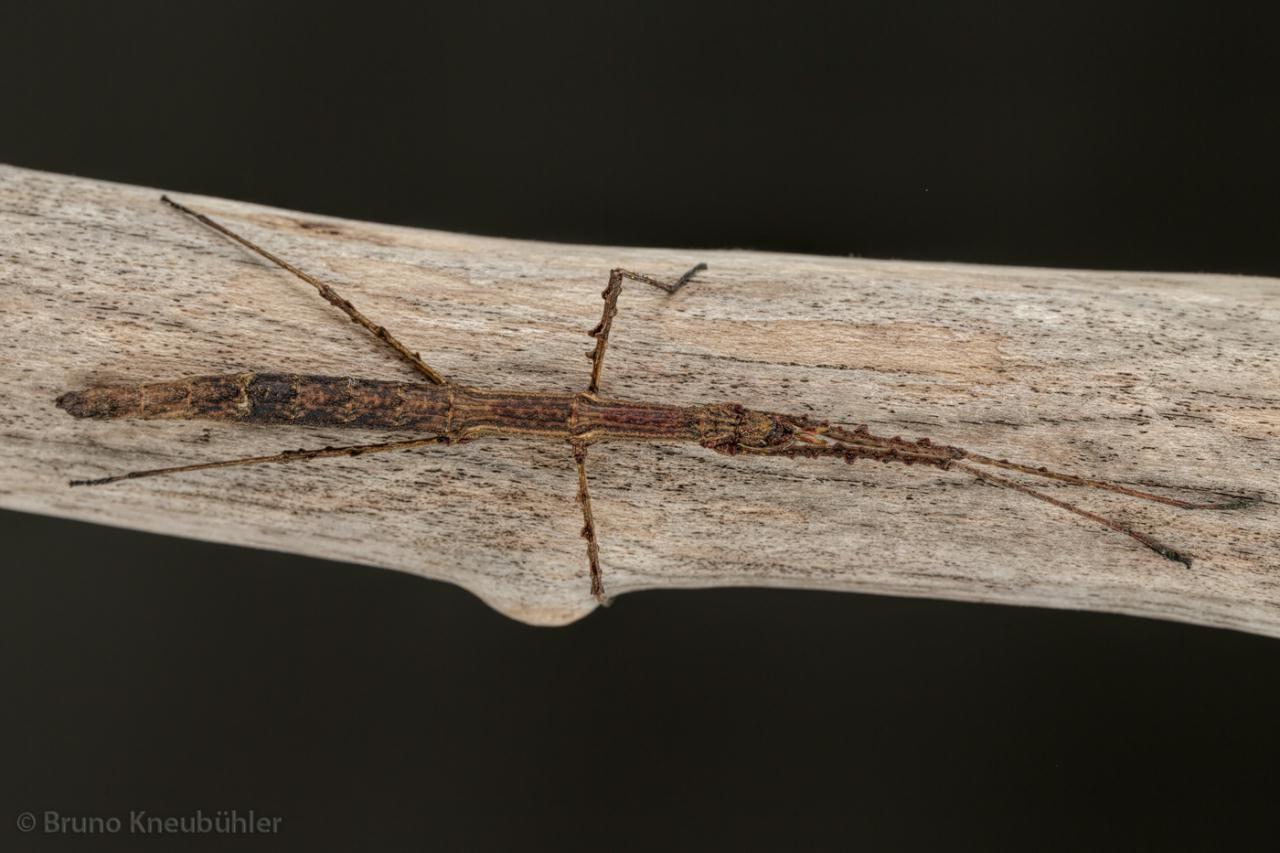
Genus
Species
Stock
CLP
628
Culture status
In culture
Foodplants
Raspberry (Rubus idaeus)
Potentilla spp.
Bramble (Rubus spp.)
Cherry Laurel (Prunus laurocerasus)
Lamium spp.
Breeding notes
(by Bruno Kneubuehler)
General Informations
- provenience: Hong Lien NP (Vietnam)
- taxonomic evaluation by Joachim Bresseel (Belgium)
- F1 CB culture by Bruno Kneubuehler (2013 / 2014)
- further taxonomical informations ➤ phasmida.speciesfile.org
- this is a pure culture, and serious breeders will avoid mixing it with cultures of a different provenience
Females
- small species
- body length 4.5 cm
- reddish-brown, brown or almost black specimens
- very short antennae, with few segments only
- coxae and ventral thorax reddish
- many small lobes on the legs
- a warty growth at the dorsal hind ridge of the 5th abdominal segment
- very short subgenital plate
- whole body is hairy
Males
- body length 3.5 cm
- dark brown
- legs often darker colored
- coxae and ventral thorax reddish
- very short, oddly shapedantennae
- two short spines on the head
- few, small lobes on the leg
Nymphs
- small, about 10 mm
- green
- legs dark ringed
- on how to easily distinguish between male and female nymphs
Eggs
- 6 x 1 mm
- light and dark brown mottled
- matt
Food Plants
- strawberry leaves (Fragaria spp.) and / or cinquefoils (Potentilla spp.)
verywell accepted by freshly hatched nymphs - bramble (Rubus spp.)
well accepted by older nymphs and adults - cherry laurel (Prunus laurocerasus)
well accepted by older nymphs and adults. Fresh leaves are better accepted than old leaves - dead nettles (Lamium spp.)
well accepted by older nymphs and adults
Breeding, Behaviour
- active mainly during the night
- a slow and slow-growing species, which is eating just a little bit
- they feign death when touched
- eggs are glued to different substrates (including their food plant) usually above ground
- about 2 - 3 eggs per female and week
- incubation (on slightly damp vermiculite) about 2 - 3 months at 20 - 23 °C
- it is easy to extend the incubation time with the LTD-Method, as their food plants are not easily available during european winter time
- nymphs hatch during the night
- a higher humidity is essential for this species, about 70 - 80 % (or higher) seems to be good enough
- one can spray them regularly with chlorine-free water, but the water should dry up again
- easy to breed in my experience
Basics of phasmids breeding
- keep only one species per cage, overpopulation is one of the main reasons for breeding failures
- keep nymphs seperate from the adults
- choose the cage big enough, when in doubt it is (usually) better to choose a bigger cage than a too small one
- a ventilator often supports good breeding results
- provide enough light, but avoid direct sunlight (overheating)
- try to keep temperatures below 25°C
- a nocturnal fall of temperature is healty for the phasmids
- do not spray too much, phasmids are no fish ! The spray should dry up before you spray again
- minimize disturbances (loud music, commotions, light at or during the night, ect.) minimal











































